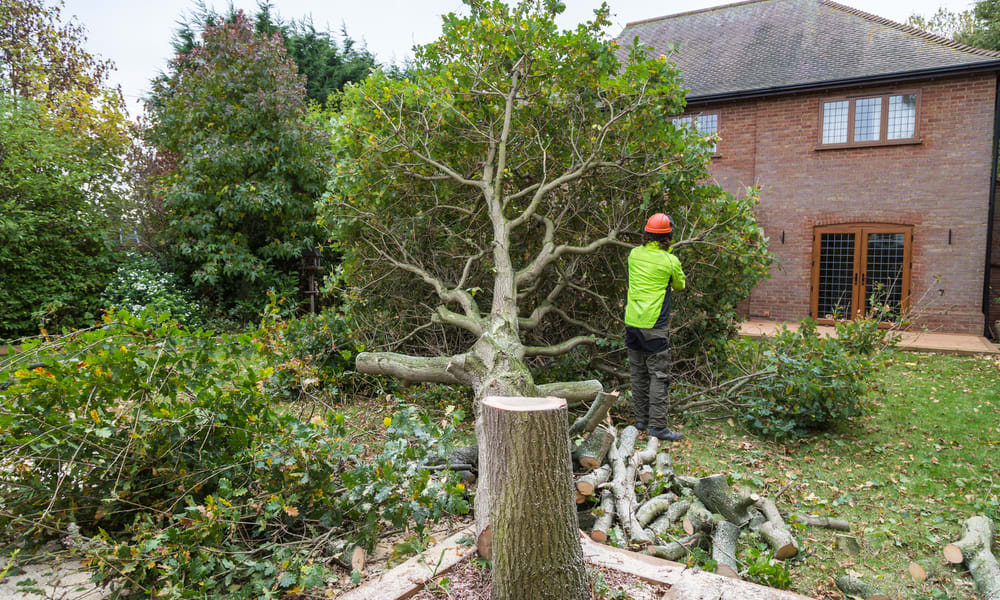Why Professional Tree Services Matter for Your Property
Healthy trees add beauty, shade, and value—but they also need expert care. Discover how professional tree services and certified arborists protect your landscape, prevent hazards, and boost curb appeal. Learn about pruning, removal, disease control, emergency response, and how to choose the right tree care provider.

Trees enhance properties in many ways, from improving curb appeal to supporting wildlife and cooling outdoor spaces. But keeping them healthy and safe requires more than occasional trimming. Professional tree services combine specialized knowledge, the right equipment, and safety protocols to protect both your landscape and your investment.
Expert tree health assessment
Certified arborists provide trained, objective evaluations that go beyond what the untrained eye can spot. They can detect early signs of disease, insect infestations, root decline, structural weaknesses, or soil problems. These assessments often include trunk and canopy inspections, root zone analysis, and recommendations for treatment or mitigation. Early diagnosis allows targeted treatments that preserve tree health and prevent problems from spreading to other plants on your property.
Proper pruning and maintenance techniques
Good pruning is part science, part craft. Professionals know species-specific pruning methods and how to remove branches without causing long-term harm. Correct cuts promote robust growth, reduce stress, and maintain a balanced structure. Arborists also understand timing—when to prune for optimal recovery and when to avoid disruption (for example, during active growth or bird nesting seasons). Beyond pruning, maintenance can include crown thinning, shaping, and selective branch removal to improve form and longevity.
Safety and risk management
Working around large trees or damaged limbs is hazardous. Trained crews use safety harnesses, ropes, aerial lifts, and industry-standard rigging to lower limbs and trunks without endangering people or property. Professionals are experienced in removing trees that threaten structures, power lines, or public access. They also offer emergency response after storms to clear dangerous debris quickly and safely, reducing risk of injury and further damage.
Common services provided by tree care companies
Professional tree care firms typically offer a broad suite of services to meet varied landscape needs:
- Tree pruning and trimming to remove dead or overgrown branches
- Tree removal for dead, diseased, or hazardous trees
- Stump grinding to remove unsightly stumps and prevent regrowth
- Tree planting and species selection for your local climate and soil
- Emergency storm response for fallen trees and urgent hazards
- Disease and pest diagnosis and treatment, including integrated pest management
- Cabling and bracing to support structurally weak trees
- Soil health management, mulching, and root protection during construction
How professional care improves your garden and landscape
The benefits of hiring professionals extend beyond single-tree care:
- Enhanced curb appeal: Well-shaped, healthy trees elevate the look and value of your property.
- Better light and plant growth: Strategic pruning increases sunlight penetration for lawns and garden beds.
- Improved air circulation: Thinning dense canopies reduces humidity and fungal disease risk.
- Healthier soil and roots: Proper mulching, aeration, and soil amendments support tree and plant vigor.
- Wildlife support: Healthy trees provide habitat for birds and beneficial insects, increasing biodiversity.
Choosing the right tree service provider
Selecting a reputable company safeguards your trees and reduces liability:
- Qualifications: Look for certified arborists (such as ISA certification) on staff.
- Insurance and licensing: Confirm the contractor carries liability and workers’ compensation insurance and required local licenses.
- References and reviews: Read customer feedback and request examples of past work.
- Equipment and methods: Ensure the company uses up-to-date equipment and follows industry best practices.
- Written estimates: Obtain detailed quotes and a clear scope of work before work begins.
How often should you schedule maintenance?
Scheduling varies by species, age, and location, but general guidelines help plan care:
- Young trees: Require frequent attention in the first few years—regular pruning and watering to establish structure.
- Mature trees: Typically benefit from professional inspections and maintenance every 3–5 years.
- Fruit trees: Often need annual pruning to maintain productivity and shape.
- Storm-prone areas: Trees exposed to severe weather should be inspected more frequently.
- High-risk trees: Trees near homes, driveways, or power lines may need more regular assessments.
Potential consequences of neglecting tree care
Ignoring tree maintenance can create multiple problems:
- Increased property damage: Weakened trees are more likely to drop limbs or fall during storms.
- Pest and disease spread: Unmanaged issues can infect nearby trees and plants.
- Lost value: Overgrown or dying trees detract from aesthetic and market value.
- Safety hazards: Unstable trees pose risks to people, vehicles, and structures.
- Legal exposure: Property owners can be held liable for damages caused by neglected trees.
| Service | Typical Cost (estimate) |
|---|---|
| Basic inspection | $75 - $200 |
| Pruning (small to medium tree) | $150 - $700 |
| Tree removal (small) | $200 - $800 |
| Tree removal (large) | $800 - $2,500+ |
| Stump grinding | $100 - $400 |
| Emergency storm response | Varies based on scope |
Cost disclaimer: Prices are estimates and can vary by region, tree size, difficulty, and local regulations. Obtain written quotes for accurate pricing.
Final thoughts
Investing in professional tree care protects your landscape, reduces hazards, and preserves property value. Certified arborists and reputable tree service companies bring diagnostic skills, proper techniques, and safety practices that DIY approaches typically lack. Regular inspections, timely pruning, and informed treatment plans keep trees healthy and resilient—helping your outdoor environment flourish for years to come.






